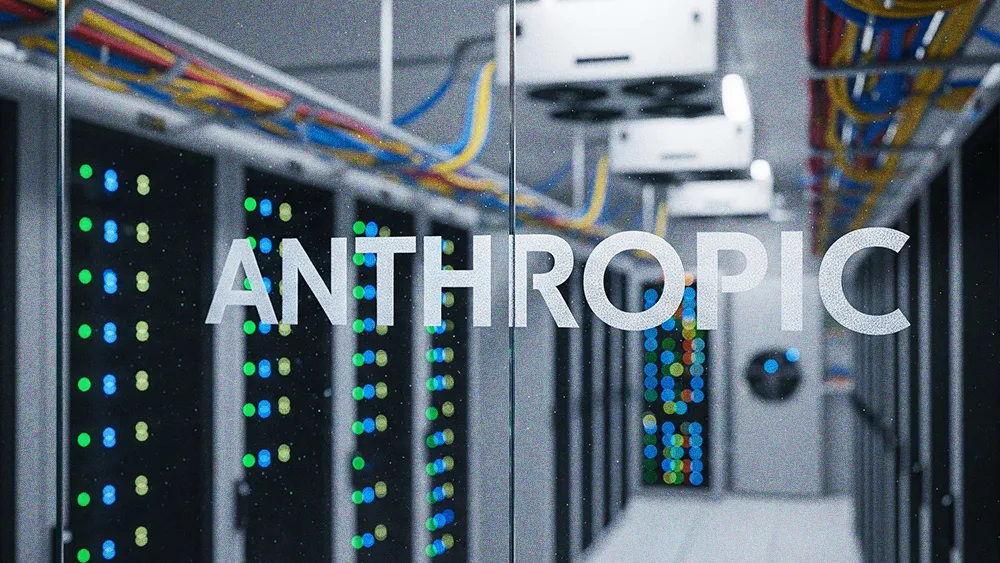
Key Points
- With functional versatility, a short learning curve, and the ability to support a wide range of personas, iPaaS platforms are emerging as critical foundations to build and scale AI agents.
- For cloud megavendors, iPaaS is just one of several technologies they sell. For pure-play vendors, succeeding in the iPaaS market is the only way to survive and thrive.
- New “iPaaS+” platforms are adapting to new customer requirements and emerging technologies, primarily AI agents. In five years time, the iPaaS market will look different — and may not even be called iPaaS anymore.
The publication of the “Forrester Wave: Integration Platform as a Service, 3Q 2025” at the end of August, which followed the “Gartner Magic Quadrant for Integration as a Service” at the end of May, gave me the opportunity to ponder a bit about what’s going on in a market I’ve been looking after since inception.
I started tracking iPaaS almost 15 years ago and back then it was just a fledgling, and relatively tiny, segment in the much bigger integration software technology market, then dominated by the enterprise service bus (ESB) generation of technology. Fast forward to 2025: iPaaS is now the largest segment in this market (according to most analysts, expected to reach approximately $10 billion at the end of the year) and expected to grow by more than 50% over the next five years. Moreover, iPaaS is increasingly playing a pivotal role in both large and midsize organizations’ integration strategy. The key reasons for iPaaS current and future success include: affinity with cloud architectures, functional versatility, short learning curve and ability to support a wide range of personas (integration engineers, developers, application and data administrators, and business technologists).
A Dynamic Market
iPaaS providers are a myriad, but about a dozen vendors are fighting for leadership and significant market share. Mega-vendors, such as AWS, Microsoft, Oracle, Salesforce and SAP, grab significant revenues in their captive business applications and technology markets. These providers typically have achieved this position in the market by leveraging the established business relationships with their customers, the commercial synergies with the other products in their portfolio, and usually a “good enough”, especially for their most loyal clients, iPaaS offering. However, most mega-vendors are not particularly effective at, nor interested in, proposing their iPaaS outside of their captive ecosystem. In this respect, pure-play iPaaS providers (for example, Boomi, Celigo, Jitterbit, Snaplogic and Workato) feel much more comfortable in playing in the open market because they have the technology capabilities (for example, hundreds, if not thousands, of adapters) and the commercial focus needed to compete across multivendors and multi-cloud ecosystems.
Simply put: for mega-vendors iPaaS is one of the dozens of markets they compete in; for pure-play providers, succeeding in the iPaaS market is the only way to survive and thrive. Consequently, although iPaaS provider acquisitions are commonplace, the market is still relatively fragmented and quite dynamic. The result is a market where both megavendors and pure-play providers have been coexisting and growing for many years. iPaaS appeals to both midsize and large organizations.
In the wake of midsize organizations’ SaaS and cloud architectures adoption, initially iPaaS providers focused on that segment of the market, which traditionally had not invested that much in integration technology because of the cost and complexity of the previous generation of technologies. iPaaS, instead, caters to these organizations’ needs in terms of short learning-curve, operational simplicity, average skills requirements, and affordable and predictable pricing.
iPaaS still maintains its dominance among these organizations. However, it is now a fully endorsed and widely adopted option by large organizations as well, with no significant distinction across geographies and vertical markets. Large organizations’ support stems from iPaaS rather dramatic technology evolution over the past five years:
- iPaaS can now support a much wider set of scenarios than the original SaaS integration requirement, including: hybrid integration, data integration, process automation, API publishing and B2B integration.
- A modern iPaaS can now address even the most demanding enterprise requirements in terms of availability, reliability, scalability, throughput, manageability, observability, security and governance.
- iPaaS pricing models have become more flexible and more suitable for large organizations’ needs for predictability.
In large organizations' strategy these modern, “iPaaS++” products do not play just the complementary role the original iPaaS used to. On the contrary: for a wider and wider set of organizations an “iPaaS++” is, by default, their strategic foundation, at times complemented by other products (for example, event brokers, B2B gateway software products or RPA tools) to support specific requirements.

"Platforms are adapting to new customer requirements and emerging technologies, primarily AI agents. In five years time, the iPaaS market will look different — and may not even be called iPaaS anymore."
iPaaS Evolutions: From Integration to Agentic Process Orchestration
The evolutionary process that led from iPaaS to “iPaaS++” is not slowing down at all. It’s continuing unabated to adapt to new customer requirements and emerging technologies, primarily AI, in particular AI agents. In five years time the iPaaS market will look rather different to the point it may not even be called iPaaS anymore. These are, in my opinion, the fundamental trends at play:
- iPaaS and AI are in a symbiotic relationship. iPaaS vendors are increasingly delivering new capabilities to support AI-specific use cases. For example, the ability to inject AI functionalities (e.g., AI-based IDP) in traditional business processes, integration with multiple LLMs and support for AI architectures like RAG, MCP server and composite AI. Therefore, we can say that
iPaaS enables AI.
At the same time, iPaaS makes more and more use of AI capabilities (ML, Gen AI, NLP, rules engines etc.) to make it easier, faster, cheaper and more manageable and governable to design, develop, deliver and operate integration processes. Hence,
AI is giving birth to more powerful forms of iPaaS.
- iPaaS naturally complements AI agents. One particularly relevant aspect of this symbiosis is the relationship between iPaaS and AI agents. To be really useful, AI agents must be able to effectively integrate with organizations’ “environment”, that is, their business applications, data sources, devices, processes and people. AI agents must be able to receive business events and data from the environment and, in response, take actions in the environment itself, for example, execute ERP transactions, update databases, activate devices or trigger long lasting business processes (Note that the set of actions an AI agent is allowed to carry out is often referred to as “skills”). Moreover, at times, AI agents must be “orchestrated”, that is, must collaborate to address complex business scenarios.
However, sensing and dispatching business events, orchestrating transactions or automating processes to build skills, connecting AI agents with the appropriate skills, and orchestrating different types of capabilities is something that iPaaS can do very easily. Therefore, vendors are adding to their iPaaS numerous capabilities meant to better support AI agent-enablement (for example, support to emerging protocols such as A2A [Agent-to-Agent protocol] and MCP [Model Context Protocol]). Therefore,
iPaaS is rapidly evolving to become an essential enabler for enterprise-class AI agent-based architecture.
- iPaaS naturally supports democratization of IT. A growing number of organizations are delegating to business teams the responsibility for digital delivery. Their goal is to improve business/IT alignment, accelerate time-to-value and establish clearer and unambiguous business accountability. This "democratization" of digital transformation initiatives implies also a certain degree of delegation of integration, automation and orchestration delivery to the business teams themselves.
iPaaS, because of its versatility, fast time-to-value and short, low-code-enabled learning curve, is, in many cases, the ideal platform to support integration, automation and orchestration democratization strategies.
Gen AI-based iPaaS assistants (a.k.a.: “copilots” or, albeit often improperly, “development agents”) are further favoring democratization by making iPaaS development, management and operations even easier, faster and more effective.
- iPaaS as the catalyst for technology consolidation. We already mentioned how a modern and leading iPaaS today supports a wide range of requirements, including, but not limited to: application and data integration, process automation (increasingly supporting RPA), API management, event brokering, intelligent document processing (IDP), low-code development, and, as discussed above, AI enablement and AI agent orchestration. As such,
A growing number of user organizations are adopting an iPaaS to support technology consolidation strategies aimed to simplify their automation and integration technology portfolio.
In many instances, organizations can indeed replace their existing combination of “legacy” ESB, ETL/ELT, API management, BPA tools, and other automation and integration technologies with a single iPaaS. The unified and architecturally consistent set of iPaaS capabilities (low-code and AI-assisted development, execution, operations, monitoring, management, security, observability and governance) helps organizations reduce their integration costs and operational complexity, whilst improving business agility and shortening time-to-value.
By combining all these trends discussed we end up with a technology dramatically different, and much more powerful, than the classic iPaaS and even iPaaS++. Such an “uber-platform” is not only capable of supporting the “classic” automation and integration scenarios (application and data integration, process automation, API management, B2B integration etc.). It is suitable to also address more complex and strategically impactful scenarios such as
hyper-automation, intelligent application and process composition and , most notably, agentic process orchestration.
The latter refers to the use of AI agent technology to automate fuzzy, non-deterministic business processes.
What Should CIOs and IT Leaders Do Now?
The industry is increasingly recognizing the technology consolidation discussed above and is trying to define new product categories to capture the capabilities resulting from this trend. We refer to this consolidated and unified set of technologies as Enterprise Orchestration Platform (EOP). Forrester calls it Adaptive Process Orchestration (APO) and Gartner refers to it as Business Orchestration and Automation Technology (BOAT) platform.
The industry will decide how these AI-enabled “uber iPaaS” products will be called, but one thing is certain: they will play a critical role in midsize and large organizations’ strategy.
Time for you, as CIOs and IT leaders, to:
- familiarize yourself with EOPs by starting to climb their learning curve via POCs and pilot projects,
- plan their adoption in replacement for legacy automation and integration technologies,
- endorse them as the cornerstone for your AI and AI agentic initiatives.
You don’t want to miss the boat (pun intended…).
.svg)



.webp)

